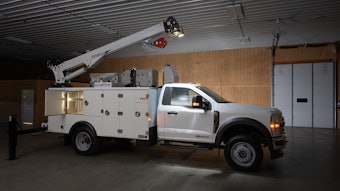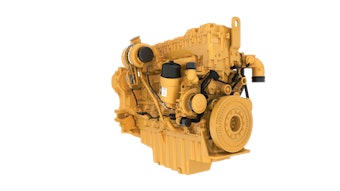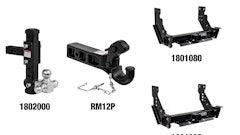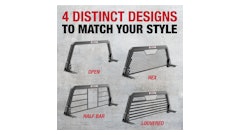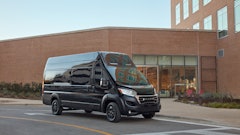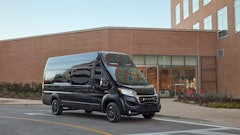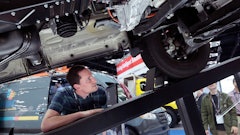
The new Federal Motor Carrier Safety Administration (FMCSA) rule mandating Electronic Logging Devices (ELDs) stirred up controversy this summer as groups opposed to and in support of the rule faced off. Perhaps due to the challenges, many commercial truck fleets held off on implementation. But the rule still stands and the compliance date looms.
“The time is running out,” cautions Kelly Frey, vice president of marketing for Telogis. If you want to work with a preferred vendor as opposed to what’s available, you need to act now, as the lines are starting to form.
“Even if you have all your equipment installed, you still have to set aside time for training,” states Melissa Rogers, product manager for HCSS. There will be changes in procedures in the move toward a digital solution vs. working with paper logs.
If you are currently not testing a solution, you don’t have any time to waste.
“The first step is to determine if you have an AOBRD-compliant solution today,” says Frey. Those currently using an approved AOBRD (automatic on-board recording device) have another two years to make the transition to ELD. Yet, you may still want to investigate an ELD solution since no one is certain if there will be increased scrutiny of AOBRDs by roadside inspectors. “The next step would be to identify a registered, certified provider, then ensure they have a supply of devices they can install.”
How to Select the Right ELD for Your Trucks
Don’t risk compliance on promises; check your ELD supplier’s status. “On its website, FMCSA has a list of applications that are actually certified and approved,” says Amy Tarkington, product marketing, HCSS. “Some companies are promising that they will be certified by FMCSA, but they are not on that list yet. So, check the list and make sure it is not just something that is promised.”
Due to procrastination and the rapidly approaching deadline, getting your fleet properly equipped could become a challenge. “There is only a finite number of installers available,” Tarkington points out. “If you want a professional installation, you have to make sure you are not getting caught without having an installer available. By December 1 or 2, things could get tight.”
ELD vendors expect a surge in business. “The biggest issue coming up is there has been such a delay that there is going to be a rush on the market and there may be some hardware shortages,” says Rogers. “Also, you need to take into account the time it is going to take to learn the system, get everything installed, teach the drivers and make sure everyone knows what they need to be doing and how they are supposed to be interacting with the applications so that they can be compliant on December 18. You cannot just turn this on and be ready to go in a day.”
Enforcement Questions Remain
The mandate is going to change roadside enforcement, but nobody can be certain of the impact until the rule takes effect. “The DOT inspectors and law enforcement are still learning these new systems, so there is going to be a time of turmoil that we are all going to go through,” says Frey. Some of this could result in a change in enforcement practices.
Historically, most of the roadside out of service penalties and fines were related to simple but common errors. “Something like 60% of the roadside out of services and fines were related to form and manner — things like forgetting to put your name on the log or doing your math wrong. All of those errors go away with ELDs.”
That may shift the focus elsewhere. “The fines and the penalties that the DOT officers have been getting for those forms and manners are going to be reduced, so they are going to need to get their money. They are going to focus more on the vehicle inspection and they are going to broaden their enforcement,” Frey predicts.
This will place a greater emphasis on Driver Vehicle Inspection Reports (DVIRs). In addition, light-duty vehicles pulling trailers that previously often flew under the radar may draw more scrutiny. The laws remain the same: any vehicle above 10,000-lb. gross combination weight is subject to hours of service (HOS) rules. “You just didn’t see a lot of enforcement at roadsides,” says Frey.
Train for Success
Change management is critical to successful ELD implementation. “You have to train your drivers and bring them up to speed,” Frey states. “You must train the drivers, but also the back office. You have to make sure they know how to do the logs, make edits if the driver forgets to do something, make sure the documentation is in order in case you get audited.
 Change management is critical to successful ELD implementation. You have to train your drivers, bring them up to speed. You must train the drivers, but also the back office.
Change management is critical to successful ELD implementation. You have to train your drivers, bring them up to speed. You must train the drivers, but also the back office.
Everyone needs to understand the process. “Let the drivers know what you are doing. Bring them into the conversation,” Frey encourages. “Get the back office and drivers to discuss how they will get the information, edit the information if need be and work together as a team.”
The back office needs to come up to speed with HOS regulations. “Someone in the office can make edits to a log, but when they are editing a log, it is not a true edit,” explains Rogers. “They are suggesting edits to drivers. The driver needs to know how to interact with the app and the driver has to accept or reject the edit. The driver owns the log.”
You can simplify the transitions by choosing a solution that meets your needs without being overly complex. “Find a solution that is easy to learn, and something that is intuitive and easy to use,” Tarkington advises. “You should look for a system that will not disrupt your daily activities.”
Choose a Solution That Fits
Many contractors fall under the short-haul exemption and should choose a product that best meets their needs. “They should choose a provider that has automated the 150-air-mile or even 100-air-mile exemption,” suggests Frey. “In our system, if we determine that a driver breaks the 150-mile radius using GPS and they don’t return to their starting location within 12 hours — which is required by the mandate — then we automatically alert them. If they do it for eight days, we alert them that they may have to switch to federal rules.”
Long-term projects in distant locations may still be covered by the short-haul exemption. “If you are a construction company and you take a job a long way from home, but that is where you are going to be located for the next three months, that new location becomes your location for the life of the project,” notes Frey. “As long as you leave from that location and return to that location in 12 hours, you can take advantage of that short-haul exemption. I categorize that as a migrating home base.”
But if you are using the vehicles to commute home on weekends, exercise caution. “You have to be careful that you are not breaking that eight-day rule on the 150-air-mile exemption,” he adds. “There are limitations on how far you can use that vehicle as a personal conveyance. If you use a solution that has automated that process, you can make sure you are not exposing yourselves to unnecessary risk.”
“We’d recommend that a construction company review its operation and consider its exposure/compliance to ELD mandates,” says Chris Harlow, director of operations, ZED Connect. “In that review process, they should see how many miles are driven, what kinds of vehicles are used, if they go across state lines and if there are cases where a light-duty vehicle becomes classified as a commercial vehicle when a trailer or other equipment is attached.”
 Pickup trucks often fall under under the HOS requirements when they is pulling a trailer with a 10,000-lb. gross vehicle weight or larger. This has always been the case but was not always previously enforced.
Pickup trucks often fall under under the HOS requirements when they is pulling a trailer with a 10,000-lb. gross vehicle weight or larger. This has always been the case but was not always previously enforced.
Many have ignored that under the existing rules, light-duty trucks can fall under HOS recording regulations. “A half-ton pickup truck will qualify under the HOS category when it is pulling a trailer with a 10,000-lb. gross vehicle weight or larger, which means [recording] will be required sometimes, but not at other times,” says Harlow. “Conversely, a Class 7 or 8 truck will require ELD all of the time. In both situations, paper logs can still be used if your drivers remain within the 150-air-mile geography throughout a 30-day window, with some exceptions if your drivers go outside of this range for eight days or more.”
Your business model really determines the type of solution necessary. “If I am typically staying under my air-mile radius, and I need to be protected from risk, I look for the lowest cost to maximize ROI,” says Harlow. “I want it to be inexpensive, plug-and-play and easy to use. Since my drivers will only use it a few days a month, ease of utilization is extremely important.”
Explore features that could be useful to your business. “A function of our ELD solution that a lot of our customers use is the yard move,” says Rogers. “As the driver approaches a yard site, they are selecting a driving status that says ‘yard move’. The entire time they have yard move selected, it is only going to deduct from their shift hours. It will never deduct from drive time.”
Electronic Driver-Logging Mandate Promises Profitable Trucking
“You also want to look for a system that lets multiple drivers log in at the same time if you have dual drivers for one truck,” suggests Tarkington. “You don’t want to have to switch back and forth and have to wait for one driver to log out.”
Use Existing Tools
 Using existing devices, such as smart phones and tablets, can minimize your investment and cut the learning curve.
Using existing devices, such as smart phones and tablets, can minimize your investment and cut the learning curve.
He adds, “With the bring-your-own device solution, an intuitive application is downloaded on a phone or tablet, and the driver interacts with this application to create, edit and certify his logs, as well as be prepared for DOT inspections. As a result, [these] solutions are designed to be as intuitive as possible, so the learning curve for training employees should be expected to be pretty low.”
Another consideration is utilizing ELD solutions already built into your vehicles. “People are often not aware there are built-in solutions that their vehicle manufacturers may already have,” says Frey. “As an example, we support Volvo and Mack trucks where they have a built-in ELD solution that we can provide for the customers. Increasingly, on Ford trucks, the Ford Telematics is powered by Telogis. Look to see if you have built-in solutions within your fleet.”
If you are going to spend money on a system, make sure it communicates with other systems in your fleet. “Look for something that comes with other product integrations,” advises Tarkington. “With HCSS, you automatically get the telematics benefit and a lot of that data will also benefit you in other parts of your business.”
Account for DVIRs
Mobile solutions such as tablets and smartphones can also be beneficial when incorporating DVIRs, though secure mounting on the vehicle is required. “That is clear in the rules. You need to mount the device when the vehicle is in motion,” says Frey. “What we recommend is having something that is easy to remove so that you can do a walk-around inspection.”
“A lot of solutions, including ours, incorporate DVIR,” says Harlow. “It’s a separate FMCSA requirement from ELD; however, the two solutions blend well together. It’s not necessary to have DVIR combined with ELD. It’s just convenient for the company and driver to have both in the same system, because it will be used every day.”
According to Frey, DVIR can also be used to benefit your off-road equipment fleet. While inspecting trucks and trailers for defects, the driver can use the same DVIR with customized reports to note defects of the equipment being transported for use by your maintenance department.
“[HCSS has] a custom DVIR, so you can make a form specific to any piece of equipment that is going to be driven or attached to that vehicle,” says Rogers. “The driver logs in with whatever piece of equipment they are going to be driving that day and it populates with whatever inspection points they need.”



